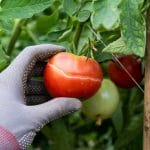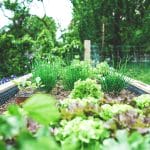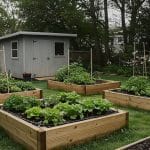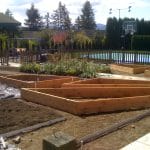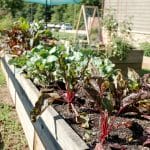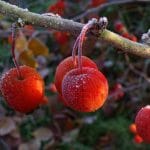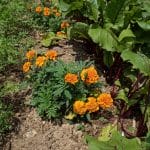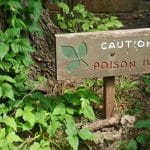The Best Palm Trees to Plant (From Everyday Favorites to Collector’s Specimens)
Palms And Cycads
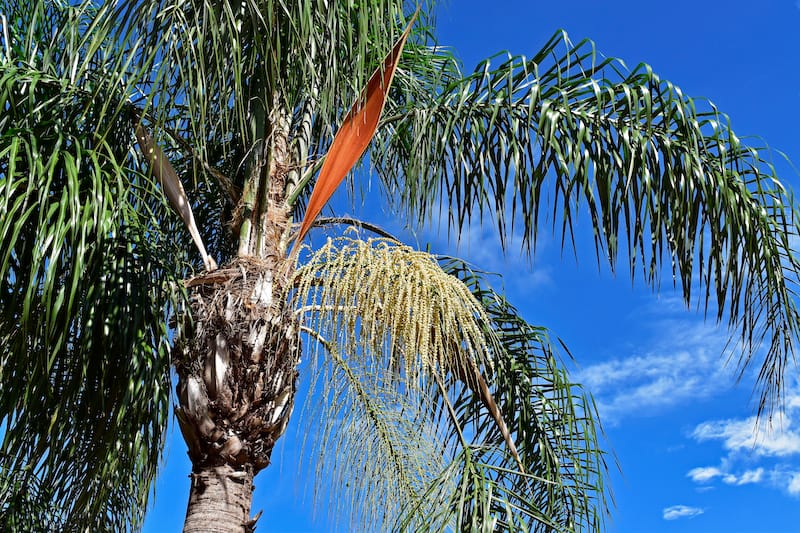
The first palm I put in the ground was a small Queen Palm that came home with me in a five-gallon pot. I stuck it near the fence and didn’t think much more about it. A few summers later, it had shot up past the garage and was shading half the patio. Funny how palms do that — they can change the whole mood of a yard almost overnight.
Planted by a pool, they turn a backyard into a retreat. Lined along a driveway, they add formality and drama. Even tucked into a corner, the right palm softens a space and whispers “vacation.” Some palms grow fast, some test your patience, and a few are so sculptural they become collector’s pieces. Let’s dig into the palms that actually earn their keep.
Palms for Everyday Gardens
Queen Palm (Syagrus romanzoffiana)
Native to South America, the Queen Palm is the “postcard palm.” Fast, graceful, and perfect for poolside shade.
- Growth speed: Fast — 2–3 feet per year in warm zones.
- Design use: Pools, patios, tall accents.
- Care: Deep soak once or twice a week in summer; monthly palm fertilizer with potassium and magnesium.
- Cost: 15-gallon trees $90–$150.
Pygmy Date Palm (Phoenix roebelenii)
If you don’t have space for a towering Queen or King, the Pygmy Date Palm is a perfect alternative. Native to Southeast Asia, it stays compact and looks right at home near patios, walkways, or even in large pots. Its arching fronds and tidy trunk make it a favorite for smaller yards.
- Growth speed: Slow to moderate — tops out around 8–12 feet after many years.
- Design use: Courtyards, entryways, poolside corners, or container plantings.
- Care: Requires regular watering and monthly fertilization during the growing season; prefers partial shade in hotter climates.
- Cost: A 15-gallon Pygmy Date Palm typically runs $100–$175.
King Palm (Archontophoenix cunninghamiana)
Native to Australia, the King Palm is the Queen’s polished cousin — smoother trunk, cleaner crown, a little more refined.
- Growth speed: Fast — 2+ feet per year.
- Design use: Entryways, framing driveways.
- Care: Likes regular water and well-drained soil; responds well to slow-release palm food.
- Cost: $125–$200 for a 15-gallon.
Mediterranean Fan Palm (Chamaerops humilis)
From the Mediterranean Basin, this palm grows in clumps.
- Growth speed: Slow–moderate; 6–10 feet in 15–20 years.
- Design use: Courtyards, patios, containers.
- Care: Hardy to cold and drought; occasional deep watering keeps it lush and healthy.
- Cost: $120–$180 for a 15-gallon.
Pindo Palm / Jelly Palm (Butia capitata)
Native to Brazil and Uruguay, this palm produces tangy fruit that is used to make jelly.
- Growth speed: Slow — 15–20 years to reach 15 feet.
- Design use: Accent tree, edible landscape.
- Care: Deep-rooted and drought-tolerant; fertilize twice yearly.
- Cost: $150–$250 for a 15-gallon.
Windmill Palm (Trachycarpus fortunei)
From Asia, this is one of the cold-hardiest palms — it shrugs off winters near 5°F.
- Growth speed: Moderate — 1–2 feet a year.
- Design use: Courtyards, patios, colder climates.
- Care: Likes steady watering; feed 2–3 times a year.
- Cost: $175–$275 for a 15-gallon.
Washingtonia Palms (Washingtonia robusta & W. filifera)
The “California palms” — tall, iconic silhouettes, including those on the Hotel California album cover.
- Growth speed: Very fast — up to 3 feet a year.
- Design use: Driveways, boulevards, tall backdrops.
- Care: Minimal water once mature; prune old fronds.
- Cost: $75–$125 for 15-gallon Mexican Fan Palms.
Canary Island Date Palm (Phoenix canariensis)
The “aristocrat of palms,” native to the Canary Islands, has a massive pineapple-like crown.
- Growth speed: Slow — 12–24 inches a year.
- Design use: Centerpiece tree.
- Care: Full sun, deep watering, palm-specific fertilizer.
- Cost: $200–$400 for a 15-gallon.
Kentia Palm (Howea forsteriana)
Native to Lord Howe Island in Australia, Kentias are the classic “parlor palms” of Victorian homes.
- Growth speed: Slow — decades to maturity.
- Design use: Indoors, shady patios.
- Care: Kentia palms like evenly moist soil. Water when the top inch feels dry, or use a moisture meter for accurate measurement. Water once a week in warm weather and less often in cooler months.; apply a monthly liquid fertilizer indoors.
- Cost: $250–$400 for a 15-gallon.
Specimen and Collector Palms
Bismarck Palm (Bismarckia nobilis)
From Madagascar, with silver-blue leaves up to ten feet across.
- Growth speed: Moderate.
- Design use: Lawn centerpiece.
- Care: Full sun, quarterly feeding.
- Cost: $200–$300 for a 15-gallon.
Foxtail Palm (Wodyetia bifurcata)
Discovered in Australia in the 1970s, it is famous for its fluffy fronds.
- Growth speed: Fast — 2–3 feet per year.
- Design use: Poolside and tropical gardens.
- Care: Regular water, palm food every few months.
- Cost: $125–$200 for a 15-gallon.
Triangle Palm (Dypsis decaryi)
Madagascar native (where we planted 100,000 trees), sculptural fronds in a triangular crown.
- Growth speed: Moderate.
- Design use: Modern landscapes, focal points.
- Care: Sun-loving, drought-tolerant.
- Cost: $150–$250 for a 15-gallon.
Chilean Wine Palm (Jubaea chilensis)
One of the thickest-trunked palms in the world, with centuries of history. The Chilean Wine Palm is rare and was cut down to collect the sap, which locals fermented into a sweet, rustic “palm wine.” The drink was more like cider or mead than fine wine, and the practice wasn’t sustainable, which is why the palm is now protected and primarily valued as a specimen tree.
- Growth speed: Very slow — 50+ years to full size.
- Design use: Collector’s palm.
- Care: Mediterranean climates; drought-tolerant.
- Cost: $250–$500 for a 15-gallon.
Senegal Date Palm (Phoenix reclinata)
Native to Africa, spreading in clumps for a wild look.
- Growth speed: Moderate.
- Design use: Natural groves, large landscapes.
- Care: Prefers sun and heat; deep watering is beneficial.
- Cost: $200–$350 for a 15-gallon.
Fishtail Palm (Caryota mitis) — My Top Pick
Native to Asia, this palm doesn’t look like the rest. Its fronds are jagged, shaped like fish tails, and it grows in clumps that create dense, jungle-like walls. Perfect for screening or dramatic backdrops.
- Growth speed: Fast — 2–3 feet per year.
- Design use: Privacy screens, side-yard fences, and bold statement plants.
- Care: Loves regular watering and feeding; tolerates partial shade.
- Cost: $150–$250 for a 15-gallon.
What I love about Fishtail Palms is their wild appearance. Where most palms feel orderly, this one feels untamed — and that makes it the best living fence you’ll ever plant.
Palm Comparison at a Glance
| Palm | Latin Name | Best For | Cold Tolerance | Growth Speed | Origin | Special Note |
|---|---|---|---|---|---|---|
| Bismarck Palm | Bismarckia nobilis | Showpiece | Zones 10–11 | Slow–Mod. | Madagascar | Silver-blue leaves |
| Canary Island Date Palm | Phoenix canariensis | Grand specimen | Zones 9–11 | Slow | Canary Islands | Pineapple crown |
| Chilean Wine Palm | Jubaea chilensis | Collector’s prize | Zone 9 | Very slow | Chile | Colossal trunk |
| Fishtail Palm | Caryota mitis | Privacy screens | Zones 10–11 | Fast | Asia | Jagged fronds, clumping |
| Foxtail Palm | Wodyetia bifurcata | Tropical fill | Zones 10–11 | Fast | Australia | Fluffy fronds |
| Kentia Palm | Howea forsteriana | Indoors, shade | Zones 9–11 | Slow | Lord Howe Island | Victorian parlor classic |
| King Palm | Archontophoenix cunninghamiana | Refined entryways | Zones 10–11 | Fast | Australia | Smooth trunk |
| Mediterranean Fan Palm | Chamaerops humilis | Small yards, hardy | Zones 8–9 (7 w/ care) | Slow–Mod. | Mediterranean | Clumping form |
| Pindo Palm | Butia capitata | Edible landscaping | Zones 8–9 | Slow | South America | Jelly fruit |
| Pygmy Date Palm | Phoenix roebelenii | Small gardens, patios | Zones 9–11 | Slow–Mod. | Southeast Asia | Compact, container-friendly |
| Queen Palm | Syagrus romanzoffiana | Quick tropical canopy | Zones 9–11 | Fast | South America | Feathery, sunset glow |
| Senegal Date Palm | Phoenix reclinata | Natural groves | Zones 9–11 | Moderate | Africa | Multi-trunk spread |
| Triangle Palm | Dypsis decaryi | Sculptural | Zones 10–11 | Moderate | Madagascar | Geometric crown |
| Washingtonia | W. robusta / W. filifera | Boulevards | Zones 9–11 | Very fast | Mexico / SW U.S. | “Hotel California” palm |
| Windmill Palm | Trachycarpus fortunei | Cold climates | To 5–10°F | Moderate | Asia | Hardy, slim trunk |
Date Palms — Quick Facts & Grower’s Notes
- The ancient crop, the True Date Palm (Phoenix dactylifera), has fed people for over 5,000 years.
- Male + female: They’re dioecious — you need both sexes for fruit. Commercial farms often hand-pollinate.
- Propagation: Offshoots produce true-to-type fruit; seedlings are variable.
- Climate: Hot, dry air and full sun are required.
- Ornamental cousins: Canary Island and Senegal Date Palms mimic the look but not the fruit.
- Seeds: Collectors chase fresh seed right after fruiting; germination can take weeks to months.
Growing Palms from Seed
Fun to do, though patience is required.
- Germination ranges from 6 weeks to a year, depending on species.
- Warmth (75–85°F) speeds sprouting.
- A Queen Palm seedling may be plantable in 2 years; a Chilean Wine Palm seedling could take a decade before it feels like a tree.
Palm Care Basics
- Watering: Deep soak young palms once or twice a week; mature palms can handle less frequent watering.
- Fertilizing: Use a palm fertilizer 3–4 times per year, containing magnesium, manganese, and potassium.
- Pruning: Remove only dead fronds. Over-pruning weakens the tree.
- Placement: Pools, patios, lawns, and courtyards all benefit from the right palm in the right spot.
- Fertilizers (with Mg, Mn, K):
- Jobe’s Organics Palm Tree Fertilizer Spikes — slow release, easy to use around the drip line.
- Miracle-Gro Shake ’n Feed Palm Plant Food — contains magnesium, manganese, and iron for greener fronds.
- Espoma Organic Palm-Tone — an organic option that feeds slowly and improves soil health.
- Southern Ag Palm Nutritional Spray — a quick fix for yellowing fronds, especially in sandy soils.
- Watering tools (for deep soaking):
- DripWorks Drip Irrigation Kits — ideal for establishing consistent, deep watering.
- Rain Bird Soaker Hose — helps water evenly around the root zone.
- Pruning tools (for dead fronds only):
- Corona Curved Blade Pruner — strong enough for small fronds.
- Fiskars Extendable Tree Pruner — handy for reaching higher fronds on young palms.
These are readily available at garden centers or online, and they’ll cover most home gardeners’ needs without requiring specialty commercial products.
Palm Tree FAQs
Which palm grows the fastest?
Which palm survives the coldest winters?
What’s the best palm around pools?
How much does a 15-gallon palm cost?
Can I grow palms from seed?
Do all date palms produce good eating dates?
What palm is on the Hotel California album cover?
Why do you like Fishtail Palms so much?
To learn more about palms, check out the book Genera Palmarum: The Evolution and Classification of Palms.
Share this post
Table of Contents
- Palms for Everyday Gardens
- Queen Palm (Syagrus romanzoffiana)
- Pygmy Date Palm (Phoenix roebelenii)
- King Palm (Archontophoenix cunninghamiana)
- Mediterranean Fan Palm (Chamaerops humilis)
- Pindo Palm / Jelly Palm (Butia capitata)
- Windmill Palm (Trachycarpus fortunei)
- Washingtonia Palms (Washingtonia robusta & W. filifera)
- Canary Island Date Palm (Phoenix canariensis)
- Kentia Palm (Howea forsteriana)
- Specimen and Collector Palms
- Bismarck Palm (Bismarckia nobilis)
- Foxtail Palm (Wodyetia bifurcata)
- Triangle Palm (Dypsis decaryi)
- Chilean Wine Palm (Jubaea chilensis)
- Senegal Date Palm (Phoenix reclinata)
- Fishtail Palm (Caryota mitis) — My Top Pick
- Palm Comparison at a Glance
- Date Palms — Quick Facts & Grower’s Notes
- Growing Palms from Seed
- Palm Care Basics
- Palm Tree FAQs
All categories
More From The Garden
Disclosure: This post may contain affiliate links. That means if you click and buy, The Bright Garden may earn a small commission, at no extra cost to you. We only recommend products we’ve vetted and believe will benefit our readers.

